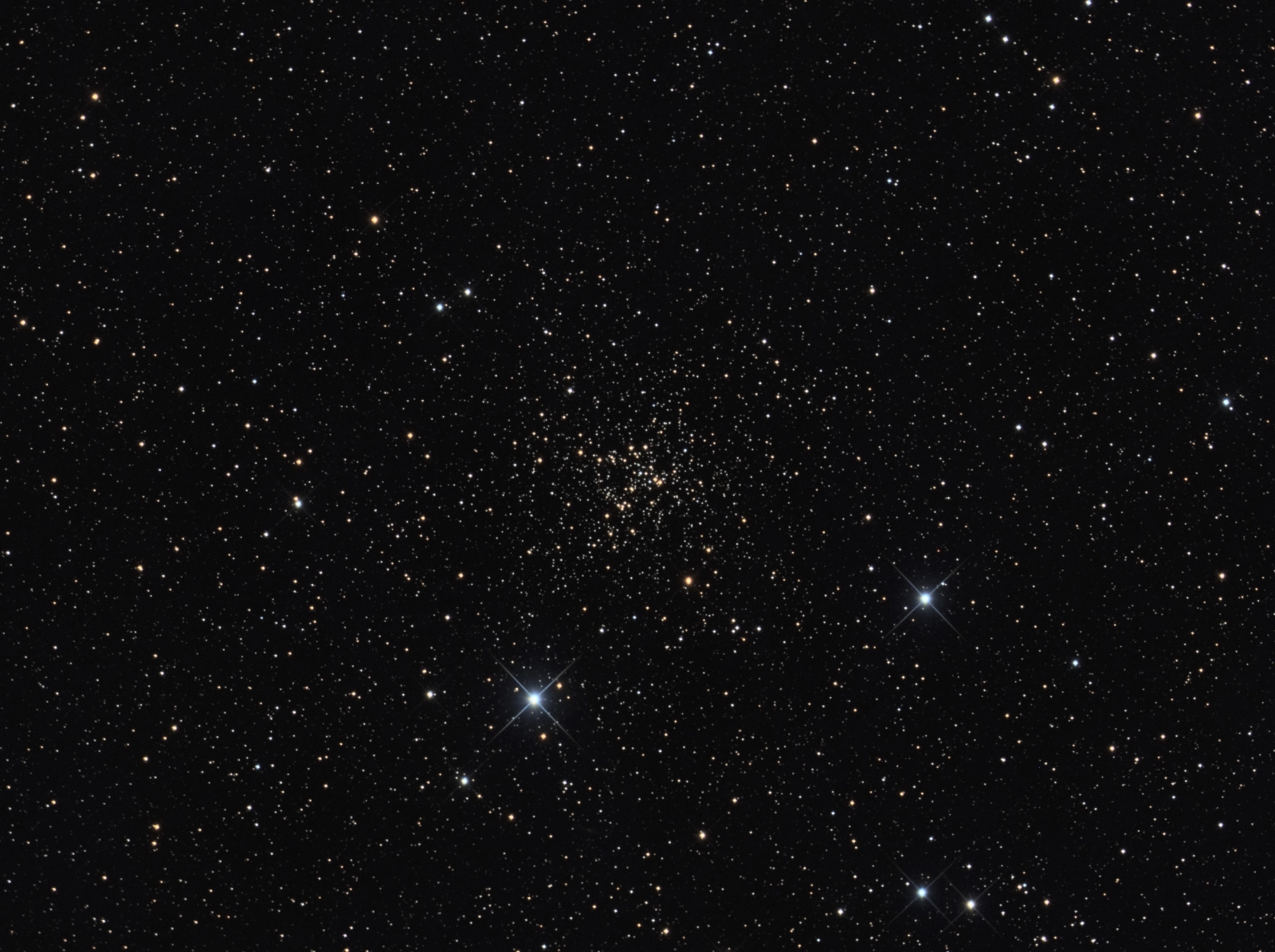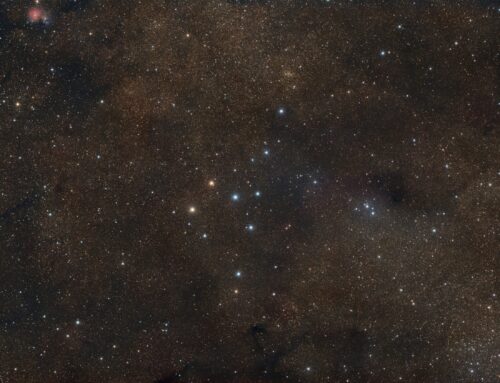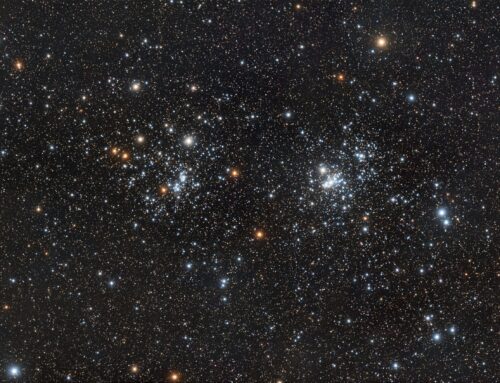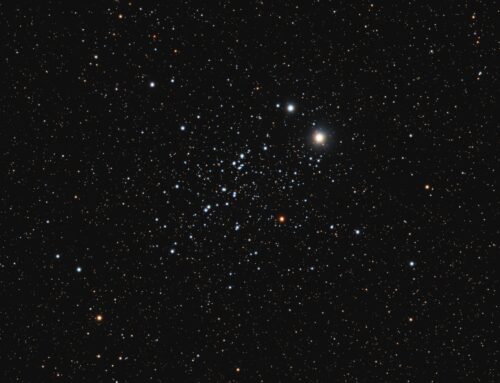NGC6819, Open Cluster
 Click image for full size version
Click image for full size version
July 3, 2015
NGC6819 continues my focus on open clusters during this full Moon period. This open cluster lies only a few degrees from NGC6791,which I imaged a couple of nights ago. NGC6819 is in Cygnus the Swan and lies about 7,200 light years away. It was discovered by Carolyn Herschel in 1784. It has perhaps 150 members brighter than magnitude 15 along with many more fainter members, including lots of cool, reddish stars. I am not sure how it earned its nickname: The Fox Head Cluster. Can anyone enlighten me?
Tekkies:
SBIG STL-11000M camera, Baader RGB filters, 10″ f/6.8 ASA astrograph, Paramount MX. Guided with STL-11000’s external guider and 80 mm f/6 Stellar-Vue refractor. Acquisition and guiding with Maxim-DL. Focusing with FocusMax. Automation with CCDCommander. Calibration, cosmetic correction, registration, integration and all processing in PixInsight. Shot from my SkyShed in Guelph, Ontario. Full moon, good to very good transparency and seeing.
11x10m R, 11x10m G and 9x10m B unbinned frames (total=5hr10m).
RGB:
Creation and cleanup: R, G and B masters were cropped and DBE was applied to each before combining to make an RGB image. BackgroundNeutralization and ColorCalibration were applied.
Stretching: HistogramTransformation was applied to make a pleasing yet bright image.
Synthetic Luminance:
Creation and cleanup: The cropped and DBE-processed R,G and B masters were combined using ImageIntegration (average, additive with scaling, noise evaluation, iterative K-sigma / biweight midvariance, no pixel rejection).
Stretching: HistogramTransformation was applied to make a pleasing yet bright image. TGV Noise was applied and the image was re-stretched to reset the black point.
Combining SynthL with RGB:
LRGBCombination was then used to apply the SynthL to the RGB, making a SynthLRGB image.
Final Processing
Colour saturation of the stars was increased using a star mask. The mask was inverted and saturation of the background was decreased. Curves was applied to boost contrast. This revealed a blue halo on upper right of the two brightest stars. A mask was made using PixelMath to multiply a bright star mask (made using StarMask) and a blue colour mask (made using ColorMask script), and blurring the result with Convolution. Then saturation was decreased through this mask to make the blue halo less obtrusive.
Image scale is about 1.1 arcsec per pixel for this camera / telescope combination.






Leave A Comment